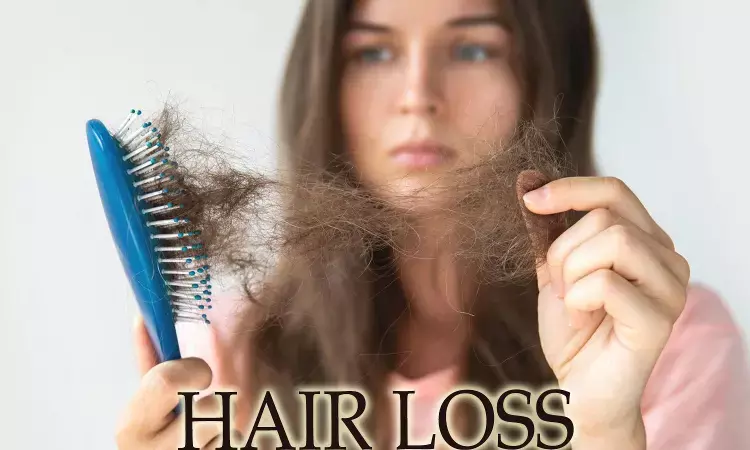- Home
- Medical news & Guidelines
- Anesthesiology
- Cardiology and CTVS
- Critical Care
- Dentistry
- Dermatology
- Diabetes and Endocrinology
- ENT
- Gastroenterology
- Medicine
- Nephrology
- Neurology
- Obstretics-Gynaecology
- Oncology
- Ophthalmology
- Orthopaedics
- Pediatrics-Neonatology
- Psychiatry
- Pulmonology
- Radiology
- Surgery
- Urology
- Laboratory Medicine
- Diet
- Nursing
- Paramedical
- Physiotherapy
- Health news
- Fact Check
- Bone Health Fact Check
- Brain Health Fact Check
- Cancer Related Fact Check
- Child Care Fact Check
- Dental and oral health fact check
- Diabetes and metabolic health fact check
- Diet and Nutrition Fact Check
- Eye and ENT Care Fact Check
- Fitness fact check
- Gut health fact check
- Heart health fact check
- Kidney health fact check
- Medical education fact check
- Men's health fact check
- Respiratory fact check
- Skin and hair care fact check
- Vaccine and Immunization fact check
- Women's health fact check
- AYUSH
- State News
- Andaman and Nicobar Islands
- Andhra Pradesh
- Arunachal Pradesh
- Assam
- Bihar
- Chandigarh
- Chattisgarh
- Dadra and Nagar Haveli
- Daman and Diu
- Delhi
- Goa
- Gujarat
- Haryana
- Himachal Pradesh
- Jammu & Kashmir
- Jharkhand
- Karnataka
- Kerala
- Ladakh
- Lakshadweep
- Madhya Pradesh
- Maharashtra
- Manipur
- Meghalaya
- Mizoram
- Nagaland
- Odisha
- Puducherry
- Punjab
- Rajasthan
- Sikkim
- Tamil Nadu
- Telangana
- Tripura
- Uttar Pradesh
- Uttrakhand
- West Bengal
- Medical Education
- Industry
More than half of postmenopausal women experience female pattern hair loss

CLEVELAND, Ohio - Both men and women are more likely to lose their hair with age. Women also have the added risk associated with declines in estrogen levels during the menopause transition. A new study sought to identify the prevalence of female pattern hair loss (FPHL), hair characteristics, and associated factors in healthy postmenopausal women. Study results are published online today in Menopause, the journal of The North American Menopause Society (NAMS).
Female pattern hair loss is the most common hair loss disorder in women. It is characterized by gradual thinning at the part line, followed by increasing diffuse hair loss radiating from the top of the head. Female pattern hair loss can develop any time between the teenage years and the postmenopause period. However, it is believed that the loss of estrogen during the menopause transition may play a role in accelerating FPHL because estrogen receptors are present in hair follicles. Menopause-related hormone changes have been shown to influence scalp hair, reduce hair diameter, and limit hair growth.
Hair loss can have a significant effect on a woman's self-esteem and overall quality of life because it affects her appearance and confidence. Because women spend, on average, one third of their lives postmenopause, research into causes and treatments of hair loss is critical.
In a new cross-sectional study involving 178 women seen at a menopause clinic, researchers aimed to evaluate the prevalence of FPHL in healthy postmenopausal women and investigate postmenopausal hair characteristics as well as the factors associated with FPHL. Of the women studied, 52.2% were found to have FPHL. The prevalence of FPHL increased with age. Low self-esteem was detected in 60% of participants and increased with the severity of FPHL.
The researchers additionally noted that a high body mass index (obesity) was associated with an increased prevalence and worsening of FPHL in postmenopausal women. Further studies are necessary to determine whether sex steroid hormones, especially estrogen and testosterone, and a history of polycystic ovary syndrome are related to hair loss in postmenopausal women.
Study results are published in the article "Prevalence of female pattern hair loss in postmenopausal women: a cross-sectional study."
"Female pattern hair loss was prevalent and associated with lower self-esteem in healthy postmenopausal women in this small cross-sectional study. A better understanding of the mechanisms responsible for this common type of hair loss in women may lead to more effective preventive strategies and treatment options," says Dr. Stephanie Faubion, NAMS medical director.
Hina Zahid Joined Medical Dialogue in 2017 with a passion to work as a Reporter. She coordinates with various national and international journals and association and covers all the stories related to Medical guidelines, Medical Journals, rare medical surgeries as well as all the updates in the medical field. Email: editorial@medicaldialogues.in. Contact no. 011-43720751
Dr Kamal Kant Kohli-MBBS, DTCD- a chest specialist with more than 30 years of practice and a flair for writing clinical articles, Dr Kamal Kant Kohli joined Medical Dialogues as a Chief Editor of Medical News. Besides writing articles, as an editor, he proofreads and verifies all the medical content published on Medical Dialogues including those coming from journals, studies,medical conferences,guidelines etc. Email: drkohli@medicaldialogues.in. Contact no. 011-43720751


